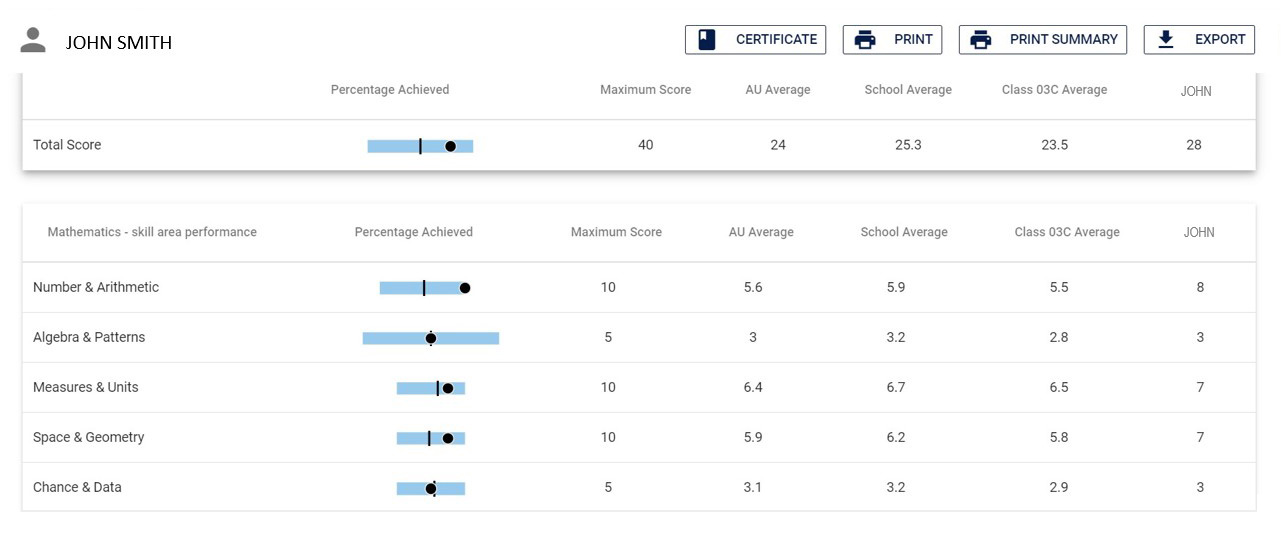The essentials of student progress monitoring for teachers

In households with children, if you closely inspect the doorframes and walls, there’s a chance you’ll find vertical markers with little dates attached. These cute indicators show how much the kids have grown over time – a nice little reminder that they’re slowly blossoming into adults.
As a teacher, you make markers of your own. But rather than their height, you’re tracking the growth of your students’ minds. And to do so, you need to undertake something called student progress monitoring.
What is student progress monitoring?
Student progress monitoring is tracking the educational growth of students, to ensure they are gaining the right skills and knowledge at a satisfactory speed.
Teachers do this every single day in the form of quizzes, asking questions to the class, and other formative assessments, providing them with a snapshot of their students’ knowledge and skills for the curriculum. They also do it less frequently with summative assessments like end-of-term exams, assignments, and coursework, which include results data that can be analysed to accurately measure progress. But regardless of the assessment’s type, whether formal or informal, graded or non-graded, they are all helping the teacher to understand their students’ progress.
 Teachers are constantly tracking the progress of their students, both consciously and unconciously
Teachers are constantly tracking the progress of their students, both consciously and unconciously
In the context of education, “progress” is a deceptively simple term for a rather complicated process. It includes both the skills and knowledge that must be acquired by your students at their level, as well as how quickly they are expected to learn them.
Skills vs knowledge
What you teach your students can be broken down into two broad categories:
- Knowledge – theoretical concepts; how much “stuff” they know. The name of the organ that pumps blood around our bodies, and why it does so. The rules of grammar. The differences between pie and line graphs.
- Skills – the ability to do something. Calculating 3 x 3. Writing a short story. Clearing a computer’s recycle bin.
Because most school subjects include a mix of both theoretical knowledge and skill, you’ll need assessments that cover both categories. A student may know what a multiplication table is and why it’s important, but they also need to successfully multiply some of the numbers without the table’s help. They may intimately know the rules of grammar, but must also use them to write logical, engaging essays.
This is one reason why creating meaningful assessments can be such a slog for teachers. To accurately measure and monitor student progress, they need to precisely test the knowledge and/or skills for a unit, remembering that they are two distinct forms that are tested and measured differently.
Here’s an example of how this can trip teachers up: let’s say that for a single Maths term, students spent much of their time honing their algebra skills, but not learning any new concepts. When it’s time for testing, the teacher needs to assess how much better they’ve gotten at algebra, not whether their theoretical maths knowledge has improved. If they tested for both, they might reach the incorrect conclusion that they’re falling behind.
This complexity is one reason why pre-created assessments have become so popular. At the very least, they give you a foundation to work from, helping you assess the right things in the first place so that you can accurately measure student growth. Or some standardised assessments (like Reach) are designed specifically to measure progress year on year, without needing to be changed.
Rate of progress
 To understand how quickly your students are progressing, they’ll need to sit multiple assessments
To understand how quickly your students are progressing, they’ll need to sit multiple assessments
Speed is the other important thing to measure for student progress. Testing knowledge or skills with a single assessment shows where students are on their learning journey; their position on the map. But you also need to know how quickly they’re moving – school doesn’t last forever, after all.
To measure your students’ rate of progress, you need to analyse data from two or more assessments over time. That’s the whole point of NAPLAN. It’s a standardised test that helps the Australian government (and teachers) understand student progress for literacy and numeracy, year-on-year. They can tell how much students know and how quickly they are learning it, which helps inform policy.
To determine rate of progress for your students, you’ll need to set your own standardised assessments. These are sometimes set at the end of each term, but their frequency will depend on the amount and breadth of content for each unit. In theory, the more content being tested, the longer the time between tests.
When you have the results from two or more assessments for a subject, you can analyse the data to learn how quickly students are progressing, and whether the pace is appropriate. This information can help validate your teaching strategies and stress the need for possible tweaks. It will tell you whether learning goals are being achieved, and help predict the trajectories of not only individual students, but your entire class (or more broadly, the entire school). The more assessment data you have, the more accurate your evaluations are likely to be.
Regardless of whether you’re measuring skills, knowledge, or rate of progress, student progress monitoring is an essential, ongoing part of teaching that tells you where each child is on their learning journey, and what kind of support they need to succeed. This is the essence of inclusive teaching. It can help you hone your teaching methods, suggest whether you need to spend more time on instruction vs activities, clue you in to optimal group sizes, and more.
Student progress monitoring examples / tools
Student progress monitoring takes many forms in education. Here are some common examples that can help you track your students’ development:
1. Diagnostic tests
These are the regular tests that teachers use to diagnose and monitor their students’ understanding – quizzes, surveys, discussion boards, and many more. We covered these in detail in our diagnostic assessments blog. They are an informal, ongoing part of education that help you build clearer pictures of their students’ progress.
2. Benchmarking assessments
Benchmarking assessments are standardised tests that measure student progress, typically year-on-year. By providing precise benchmarks from one year to the next, teachers can track their students’ knowledge and skills over time and determine whether they are learning quickly enough.
Reach is our own example. It gives teachers objective performance data for every core subject, helping them to track their students’ knowledge and skills over time. They can compare performance with thousands of other students who participate in the tests, using data like average score, graded bands, standard deviations, and more. With this precise information, teachers can figure out what needs to be improved to meet their learning goals.

Benchmarking assessments like Reach will break down your students skills, which you can compare to previous years’ performances
3. End-of-term or year summative tests
Exams, coursework, speeches, and other standardised, summative tests produce concrete data that allows you to monitor your students’ progress over time and refine your teaching strategies. NAPLAN is a compulsory example of this, but most schools set these kinds of summative assessments to provide grades for their students. When monitoring progress using this data, the key is to ensure you’re comparing apples with apples.



